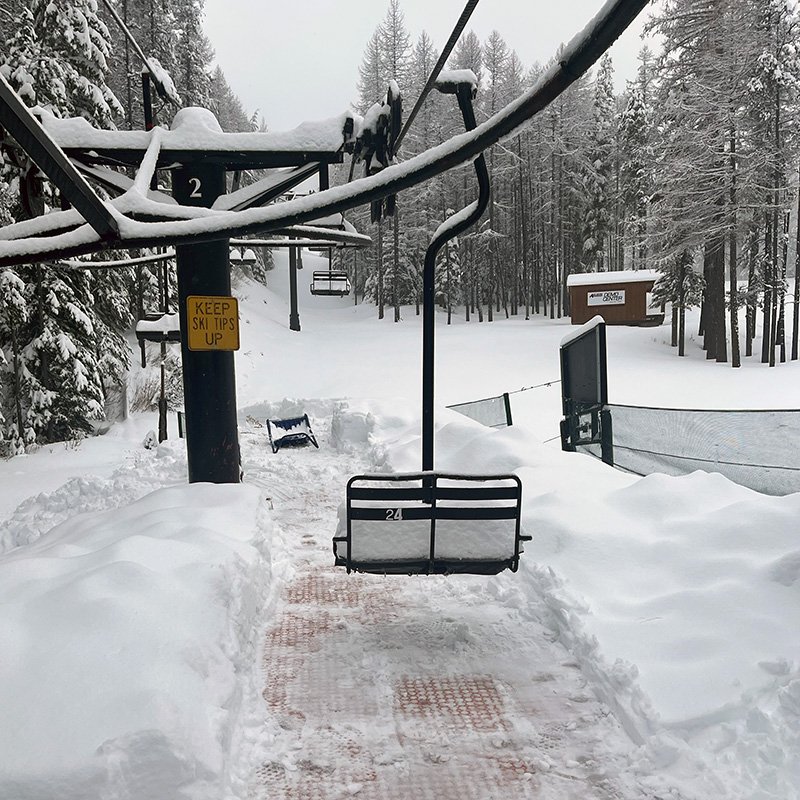Technology and outdoor activities blend together naturally in the last decade. Gartner predicts that direct-to-consumer businesses will offer subscription services at a 75 percent rate by 2023. Digital memberships lead this state-of-the-art trend. Technology’s influence runs deep even in our most natural experiences.
Outdoor recreation has seen amazing technological progress in the last ten years. Advanced clothing, signaling devices and protective gear have transformed the experience. Modern explorers enjoy camping without sacrificing their daily comforts. Satellite technology makes adventures safer by a lot. Adventurers now use personal locator beacons to send distress signals and GPS devices to share their exact location.
State-of-the-art technologies reshape people’s connection with nature constantly. Modern explorers consider smart wearable devices their essential companions. Ultraviolet water purifiers make water safe to drink within minutes by eliminating bacteria and viruses. These advances not only change our access to nature but also help more people enjoy outdoor experiences safely.
Technology is Changing How We Connect Outdoors
Technology has changed how people connect with nature. Modern tech tools do more than just help with navigation or safety. They create new ways for outdoor enthusiasts to build communities and share their experiences.
Digital memberships and virtual communities
Outdoor enthusiasts now get specialized digital memberships tailored to their interests. Outside Digital gives unlimited access to outdoor publications at $4.99/month (billed annually at $59.99). Readers get complete outdoor content without physical magazines. Outside Interactive’s community-based social platform connects over 100 million registered users. Users follow authors, creators, brands, and trail associations through a customized activity feed.
Social media as a tool for outdoor engagement
Social media drives outdoor recreation powerfully. A newer study, published by the National Academy of Sciences shows parks with high social media exposure saw 16-22% more visitors. Parks with lower exposure didn’t change much. Photos and videos with positive sentiment create the biggest impact on visits. These posts work as free advertising for natural spaces. Research shows social media can improve people’s desire to join outdoor activities, especially when you have strong social connections.
Live audio and real-time interaction platforms
Immediate interaction platforms change how people experience and share outdoor adventures. Mobile live streaming apps let users broadcast adventures to multiple platforms at once. This creates authentic experiences for viewers. New apps like Voiijer mix social media with exploration tools. Users document their trips through photos, videos, audio, text notes, and 3D scans for augmented reality viewing.
How to marry technology and the outdoors
Smart technology use in nature needs a balanced approach:
- Clear tech usage boundaries matter—devices should help with navigation, safety, or improve experiences instead of constant digital connection
- Tech-free periods during outdoor adventures help you connect with natural surroundings
- Nature-focused apps like bird identification tools or citizen science platforms deepen your connection
- Apps like The Wildlife Trusts’ “30 Days Wild” or RSPB’s “Giving Nature a Home” encourage outdoor activities rather than replace them
Smart technology use can improve our connection to nature instead of weakening it.
Smart Tools That Make Outdoor Adventures Safer
Adventure seekers should not let safety worries stop them from discovering remote wilderness areas. Technology has given us amazing tools that help address these concerns. Both newcomers and experienced explorers can now venture out with greater confidence.
GPS and immediate tracking devices
GPS units have grown far beyond simple navigation tools. These dedicated devices work better than smartphones in areas without cell service because they connect straight to satellites for precise positioning. New models come with features like breadcrumb trails to track your path, which makes finding your way back much easier. Their tough, weather-resistant cases and replaceable batteries last much longer than what you’ll find in smartphones. The Garmin GPSMAP 67, to name just one example, keeps strong GPS signals steady as you move through forests, hills, and remote trails.
Wearables for health and safety monitoring
A hiking smartwatch works as your perfect trail buddy and gives you navigation plus vital health updates. These smartwatches keep track of important signs like heart rate and blood oxygen levels, and they warn you about possible health problems. Many now include fall detection – a great feature if you’re mountain biking or climbing where falls happen often. Experts say you should look for multi-band or dual-frequency GPS to get better accuracy in difficult terrain. These devices let you share your location right away so your family knows you’re safe.
Emergency beacons and satellite communication
Satellite communication devices become your lifeline once you move beyond cell coverage. Personal Locator Beacons work without any subscription fees. They send strong distress signals through the COSPAS-SARSAT satellite network straight to emergency teams. Satellite messengers need subscriptions but let you send messages both ways. You can text and work with rescue teams after sending SOS signals. These satellite devices are smaller, cheaper, and easier to use now. They provide SOS alerts and reliable communication even in the most isolated places.
Apps for weather, terrain, and trail alerts
Weather can change faster than expected outdoors, so quick updates matter. The Weather Channel app includes MinuteCast, which shows exactly when rain starts and stops. Hiking apps like Cairn tell your safety contacts if you’re late and share details about your planned route and return time. These apps use special calculations to figure out when you’ll arrive based on your speed, trail length, and elevation changes.
Innovations in Outdoor Gear and Equipment
The outdoor gear industry is going through an amazing transformation. Innovative technology combined with traditional equipment now boosts outdoor experiences in remarkable ways.
3D-printed gear for custom comfort
3D printing technology has made custom equipment more available to everyone. Designers can now create customized gear that matches individual needs, which improves performance and comfort. Jack Wolfskin uses 3D printing to create better hiking packs that are lighter and more durable. These packs have better ventilation and can lower back temperatures by up to 5°C. This technology helps small brands significantly because they don’t need expensive traditional manufacturing equipment.
AI-designed bikes and climbing tools
AI is changing how outdoor equipment gets designed. The “ebii” bike by Acer shows this perfectly. Its AI system adapts to your pedaling power and route conditions. The bike adjusts its motor output based on the terrain and has safety features like crash detection and rear collision warnings.
Eco-friendly fabrics and algae-based materials
Microalgae-based materials represent some of the most exciting innovations. WNDR Alpine uses AlgalTech™ materials instead of petroleum-based products. Their Algal Wall sidewalls contain 67.89% biobased content and perform 138% better at damping than traditional materials.
Portable power: solar panels and wind turbines
Adventurers can now use renewable energy anywhere they go. The Jackery SolarSaga 100 provides quick power generation with a lightweight design. Compact wind turbines can generate up to 40 watts of power when conditions are right.
Smart thermoses, tents, and lighting systems
Smart technology has revolutionized outdoor living. Modern tents come with built-in LED lighting systems and solar panels. These features bring tech comfort to wilderness adventures.
Tech for Conservation and Environmental Awareness
Technology plays a vital role in modern conservation efforts to protect and study our natural world. Scientists and nature enthusiasts now use advanced tools to monitor ecosystems with amazing precision without disturbing wildlife.
Drones for wildlife and habitat monitoring
High-resolution cameras and thermal imaging on unmanned aerial vehicles have changed wildlife conservation forever. Researchers in Botswana use drones and artificial intelligence to track herds of zebras, giraffes, and elephants, and they can spot potential poachers by their movement patterns. The Nature Conservancy’s teams use drones to take “before and after” images of prescribed fires. They also check hard-to-reach areas and keep tabs on bison when ground access becomes impossible due to tough terrain.
Mapping tools for public land access
The Bureau of Land Management’s Public Lands Access Data (PLAD) offers detailed GIS datasets and interactive web maps. These maps show legal routes to BLM-managed lands. Outdoor enthusiasts can now make better choices about their public land access points with these digital tools.
AR apps for learning about nature
WWF’s Free Rivers app uses augmented reality to put an entire landscape in users’ hands. People can see how wildlife and communities depend on healthy flowing rivers. On top of that, The Nature Conservancy’s Agents of Discovery app makes preserve visits more fun with AR-powered interactive missions.
Sustainable tech for low-impact camping
Smart grids are becoming common in modern campgrounds. These systems make the best use of electricity by tracking energy usage and weather patterns. IoT devices help campers watch their energy use, manage lighting, and get weather updates. This tech reduces waste and saves resources.
Conclusion
Technology and nature work together to create better outdoor experiences for everyone, though many once saw them as opposites. The digital revolution has changed how we connect with natural spaces. A social-first community lets outdoor enthusiasts share their stories and motivates others to explore new wilderness areas.
Many people used to avoid remote locations due to safety concerns. But modern tools like GPS devices, health-monitoring wearables, and satellite communication systems have made outdoor adventures available to everyone – from beginners to seasoned explorers. These tech safeguards give peace of mind while keeping the thrill of exploration alive.
Equipment innovations have boosted comfort and performance in outdoor activities. Technology keeps improving the outdoor experience with 3D-printed custom gear, AI-designed bikes, and eco-friendly materials that reduce environmental effects. Smart camping equipment and portable power solutions help bridge the gap between natural immersion and modern comfort.
Technology has become a powerful ally for conservation efforts. Drones track wildlife without human interference. Mapping tools make public lands more available, and AR applications teach users about their natural surroundings. These technologies encourage greater appreciation for natural spaces and help preserve them for future generations.
The bond between technology and nature keeps growing stronger. As outdoor enthusiasts, we need to balance tech benefits with mindful disconnection. We should set boundaries for device usage and choose tools that improve our natural experiences instead of distracting from them. Technology works best as a bridge to nature, not a barrier. When used wisely, these innovations can strengthen our connection to the outdoors and make adventures safer, more comfortable, and more available than ever.
AI assistance from Writesonic was used in the research and outlining phases of this article. The final content and analysis are solely the responsibility of the author.






One thought on “When Technology Meets Nature: A Real Look at Modern Outdoor Life”
Comments are closed.